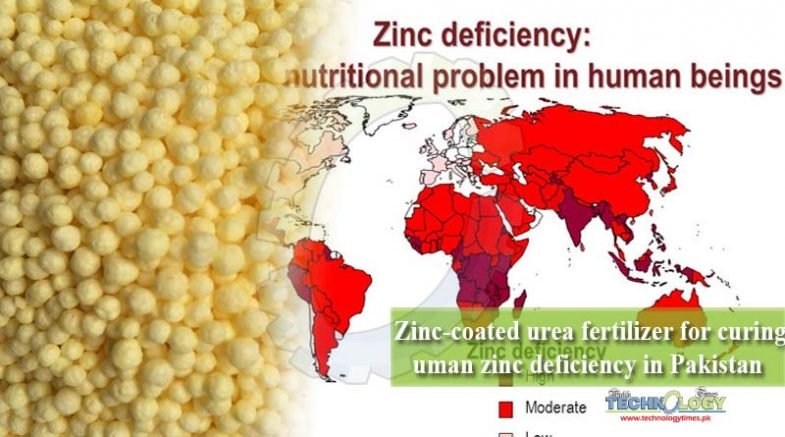Human zinc deficiency is widespread in Pakistani population. An effective solution to this problem is the promotion of zinc-coated urea fertilizer.

Facts on the ground
Wheat is the staple food of Pakistan, consumed three times a day as Chapati and other products. The reliance on wheat for daily diet is much more in rural areas of the country where food diversification is lacking due to affordable dietary materials. Demand for wheat and other cereals continue to increase with an increase in population. Over the years, we are only focusing to increase per hectare yields to ensure food security in the country. Grain quality attributes are also important for healthy food, however, ignored to date.
Minerals are necessary ingredients of a balanced human diet and have the same importance in our diet as are carbohydrates, proteins, fats, and vitamins. Many minerals including calcium, iron, zinc, selenium, and iodine are deficient in the human population of developing countries. According to the World Health Organisation (WHO), human zinc deficiency is one of the major causes of diseases and deaths in developing countries such as Pakistan. About 40% of each of the children and women in the country are zinc deficient, as reported in the latest Nutritional Survey of Pakistan 2001-2002. Dietary zinc requirement depends on age and gender, ranging from one to fourteen milli-gram zinc per day. These intake levels are generally not fulfilled especially in remote-rural areas of the country where wheat is a major food item.
Zinc deficiency often appears in women during pregnancy and in children under the age of five. Severe zinc deficiency in humans results in growth retardation, delayed bone maturation, skin infections, diarrhoea, impaired appetite, malfunctioning of the immune system, and the appearance of behavioural changes. However, mild to marginal zinc deficiency is most common that often acts as hidden hunger.
Clinic treatments or chemical fortification of food products can alleviate human zinc deficiency. However, these approaches are not only costly but also inaccessible by the most suffering rural communities. Based on present research and an example from Turkey, this articles provides an economical solution to widespread human zinc deficiency in Pakistan.
What is the solution?
Supplementation, chemical food fortification, food diversification and biofortification can cure human zinc deficiency problem. Biofortification — producing micro nutrient enriched food crops at agricultural farms — has got most of the focus due to its reachability to the targeted rural population in remote areas of the world. This includes cultivar improvement and crop management strategies. Application of zinc fertilizers to soils can increase the concentration of zinc wheat and other cereal grains. This strategy is also called as agronomic bio fortification and it is a rapid solution to human zinc deficiency.
Soil is the ultimate source of minerals for humans via plants and animals. Human zinc deficiency correlates with zinc in soils and in staple food grains of the area. Therefore, increasing plant available zinc in soils or developing wheat genotypes inherently high in grain zinc concentration seems fundamental to fight against zinc malnutrition. On average, zinc contents range from 22 to 26 micro-gram zinc per gram of wheat grain. The low grain zinc concentration in wheat is related to the nature and properties of our soils.
Soils in the country are alkaline-calcareous and low in organic matter. As a result, 70 per cent of our agricultural soils are zinc deficient. Applying zinc to these soils will not only increase the yield but it will also ensure higher zinc density in wheat grains. Farmers are not applying this precious nutrient to their fields. Lack of awareness and capital unavailability are major reasons for the slow adaptability to zinc fertilisers. Zinc application to wheat is often economical with a yield increase of 8 to 12 per cent. The yield response, however, is low as compared to nitrogenous and phosphatic fertilisers.
Zinc application to soil is also important to fulfil human zinc requirements. It is hard to convince farmers for zinc application when yield response is not obvious. While every farmer applies huge quantities of urea. In such a case, the government can force the fertilizer companies in Pakistan to sell only zinc-coated urea. Zinc-coated urea is currently not available in Pakistan while such fertilizer is available in Turkey. Application of zinc-coated urea significantly increased grain zinc concentration and grain yield in Turkey and Pakistan.
Recommendations
Availability and promotion of zinc-coated urea in the market is the best possible solution to correct soil and human zinc deficiency. By this, we can save precious human lives by providing quality grains fro human consumption.
Fertilizer manufacturing companies of Pakistan should be direct to ensure production of zinc-coated urea in the coming years. Availability of only zinc-coated urea in the market will ensure application of zinc to farmers’ fields. Depending on soil zinc levels and human zinc deficiency, this strategy may be reviewed every two to five years’ time.
